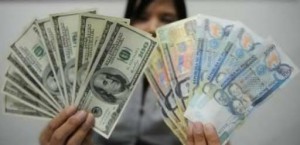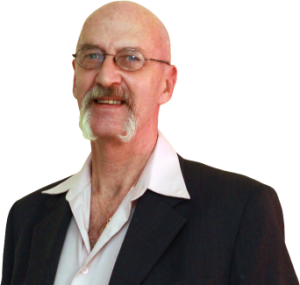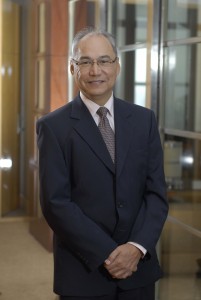2015 Outlook, part 7
By Randell Tiongson on January 20th, 2015
In this installation of the 2015 Outlook series, my friend James Lago of the PCCCI once again gives us his highly valuable views on many factors that will affect 2015 — Economic growth, stock market, US dollars, interest rates, liquidity and more. His outlook will be very helpful as to those who are taking a closer look at their portfolios.
The 2015 Outlook of James Lago
Economy – For 2015, our initial GDP growth forecast range is 6.0% – 6.6%. This baseline assumption is premised on the following growth rates of the major industry groups: industry growing by another 6.5%, services expanding by 6.0% and agriculture posting a 2.5% growth. On the expenditures side, we firmly believe that the substantial decline
in energy prices will translate to increased disposable income which in turn will translate to household spending (HFCE) projected to rise by 5.5% – 6.0%.
The major dividend from lower energy prices is lower inflation. Factoring in our anticipated peso-dollar exchange rate this year, our initial average inflation forecast for the year ranges from 2.1% – 2.5% using the 2006 base year.
PSEi – The bullish trend since its recovery in 2009 remains intact. A fresh historic high of 7,413.62 was achieved as the bull market completed its 6th consecutive year last year.
2015 starts with the leading and trailing relative valuations above its historical averages, as well as the regional average again. The lower energy price benefits will certainly be this year’s major driver. Investors are optimistic that the Philippine economy could post a 6.0% GDP growth rate, at least, for this year. Corporate
earnings will most certainly improve as a result of margin improvement and higher volume sales. Our base case scenario for the PSEi this year is a rise to 7,500 – 7,800. Healthy corrections in between is expected and we see the supports at 6,800 and 6,650.
Peso – US dollar – For this year, with the dollar index firmly above the key level of 90, and as funds flow back into US dollar assets, we see the peso probably depreciating to 46.00 or even 47.00. It will result in a 61.8% to 66.0% retracement of its October 2008 – January 2013 appreciation. On the appreciation side, an appreciation to 44.50 or even 44.00 cannot be discounted within the year as the country will continue to attract both FDI and portfolio inflows given its continued growth prospects and its investment grade rating.
dollar assets, we see the peso probably depreciating to 46.00 or even 47.00. It will result in a 61.8% to 66.0% retracement of its October 2008 – January 2013 appreciation. On the appreciation side, an appreciation to 44.50 or even 44.00 cannot be discounted within the year as the country will continue to attract both FDI and portfolio inflows given its continued growth prospects and its investment grade rating.
Domestic Fixed Income Yields – Real returns on the short-term yields remained negative anew in 2014 despite the sell-off in the latter part of the year. The year ended again with a normal yield curve whose steepness was reduced as the spread between the average short and long-term yields narrowed sharply to 160.30 bps, way below its 250 – 300 bps range.
Excess liquidity and portfolio flows into peso-denominated fixed income securities will most likely keep the continued rise of domestic yields gradual overall. The negative real returns on short-term yields in 2014 might not be absurd compared to the past few years. The flattening of the country’s yield curve, a historical first, is a possible scenario. The spread between the average short-term and long-term yields will most likely move within a 200 – 250 bps range within the year as investors will continue to find ways around the yield levels. The yield curve is also seen to remain essentially normal in 2015 with yields in between 2009 and 2012 yield levels.
Portfolio Strategy – Our overall core equity strategy for this year continues to be anchored on the soundness of a firm’s core business model and its stock’s key relative valuations, PER and PBV, trading at a discount to the PSEi’s averages. Cognizant of the benefits of lower energy prices on consumption spending and the fact that consumer-related or proxy stocks’ relative valuation are trading at a premium to the market’s averages, we chose only those whose premiums are reasonable enough to give investors a better upside potential. As a whole, lower energy prices will be beneficial to most firms by way of improved margins and increased volume sales. Several of the stocks in our short list also have attractive, above market average dividend yields.
Given the potential of a near flattening of the country’s yield curve, driven by the normalization of short-term yields and the low inflation scenario, corporates are seen to continue taking advantage of still affordable medium to long-term yields. We continue to encourage investors to take a serious look at the existing PSE-listed preferred
shares and possible new offerings in 2015 as the yields will remain attractive. For fixed income securities, investors will have to be opportunistic again, taking advantage to purchase, when yields touch attractive levels within the year. It is still best to diversify the fixed income portfolio across various tenors to optimize the portfolio yield. The suggested average tenor or duration of the portfolio must be within the short to middle-tenor ranges as yields on the long dated instruments are not attractive for now.
 Joseph James Lago is the Head of the PCCI Securities Brokers Corp. He has over 2 decades of experience in the investments industry in various capacities. He is also a professor of the De La Salle University Graduate School teaching in Management and Economics. He is a much sought after researcher, economist and analysts. He is a Registered Financial Panner.
Joseph James Lago is the Head of the PCCI Securities Brokers Corp. He has over 2 decades of experience in the investments industry in various capacities. He is also a professor of the De La Salle University Graduate School teaching in Management and Economics. He is a much sought after researcher, economist and analysts. He is a Registered Financial Panner.
2015 Outlook, part 6
By Randell Tiongson on January 16th, 2015
 Is the Philippines now entering a turning point? Is the Philippine economy in a bubble or have we achieve a self-sustaining economic growth? Presenting the views of Business Mirror columnists, investment advocate and seasoned stock market expert John Mangun!
Is the Philippines now entering a turning point? Is the Philippine economy in a bubble or have we achieve a self-sustaining economic growth? Presenting the views of Business Mirror columnists, investment advocate and seasoned stock market expert John Mangun!
The 2015 Outlook of John Mangun
Philippines 2015: a turning point
“A turning point” in literature is defined as the point of highest tension or drama when the solution or climax to the story begins to unfold. That is what the world and the Philippines faces in 2015.
Two events occurred in the financial markets as we closed 2014. The spot price of Brent crude oil hit its lowest price since May 2009. The US Dollar Index, measuring the exchange rate for the US dollar against a basket of currencies, reached its highest level at 90.64 since December 2008.
While we are all looking at the price of crude oil as it affects local gasoline prices, the bigger picture is the general price of most commodities. Virtually every index that measures a broad basket of global commodity prices is trading at or near its 2009 level.
To have this situation can only mean one thing. The global economy is in such bad condition that demand is falling rapidly. If it were only crude oil prices that were falling, then we might be able to make the argument that this is being caused by increased supply. But it is across the board for other critical commodities.
The turning point for the globe is twofold. The first is the uncovering of how bad the global economy really is as the commodity prices fall. The second turning point is how much of the ‘emerging economies’ like Brazil and that class of countries has been dependent on dollars flowing out of the US into their economies.
The same thing happened in the 1997 Asian crisis but the major emerging countries did not account for 50 percent of the global economy like they do now.
The ‘gloom-and-doomers’ have been saying that the Philippine economy is in a bubble and all the growth of the last five years is because of foreign money supporting the economy. I do not believe that. Foreign money as investment coming into this country has been dismal. Remittances from outsourcing companies and from overseas Filipinos are significant. But with domestic sources accounting for 90 percent of all new investment, we are not dependent on the foreigners and their money.
But in the next 12 months we are going to resolve the question if whether or not the Philippines is in a bubble or has finally achieved a self-sustaining growth economy that can handle global economic shocks. I believe we have.
If the Philippine peso can maintain is relative strength and narrow sideways movement in the face of the appreciating dollar, we have finally come to economic maturity. If the interest rate that top corporations must pay on the debt does not widen in relation to the US corporate borrowing rate, we are in great shape.
For stock market watchers, caution is still the strategy. Either we will see a move on the Philippine Stock Exchange Index (PSEi) above 8,500. Alternatively we will see 2015 take the PSEi to below 5,500.
This year will bring new meaning to “It’s more fun in the Philippines”. I’m looking forward to it.
Interest in the stock market first hit John Mangun when he was in his early teens, following the stock price action of  major companies in the daily newspaper long before the computer.
major companies in the daily newspaper long before the computer.
In 1976, Mr. Mangun earned his license as a stock broker on the New York Stock Exchange as well as being licensed and registered for the Options and Commodity markets.
After working for two major Wall Street firms, Mr. Mangun went to England as head of foreign exchange trading for a British asset management company.
Upon his return to the United States, he formed his own investment advisory company administering to the investment needs of corporations and high-net worth individuals.
Mr. Mangun has actively analyzed and traded the Philippine Stock Exchange since 1989, making his first stock purchase (and losing trade) buying shares of San Miguel Corporation on Friday, November 24th, one week before the 1989 coup attempt.
He has been a regular newspaper columnist, writing about the Philippine economy, business, and stock market since 1996. His website is MangunOnMarkets.com
2015 Outlook, part 5
By Randell Tiongson on January 14th, 2015
In this 5th installment of the Outlook series, a discussion on the government’s role in the economy is discussed. While there has been admirable growth in the Philippine economy, one can wonder if the growth is because of or despite of the government. We are presenting the views of one of the country’s most distinguished and revered investment expert, Mr. Gus Cosio. With his many decades of experience in the finance industry both here and abroad, Gus Cosio has become an icon in the investing industry. He is currently the CEO of First Metro.
The 2015 Outlook of Gus Cosio
Our economy could have done much better in 2014 had the government put significant effort in improving the country’s infrastructure. The country’s private sector has been doing most of the heavy lifting in terms of contributing to growth. Businesses are hiring more people such that annual employment increase looks to be sustainable so far at the one million level, this in spite of little help from government both national and local. Red tape continues to stifle businesses who would like to expand rapidly while lack of long-term government planning imposes more difficult challenges for enterprises to streamline operating costs.
A glaring example of the combined ineptitude of government units was the fiasco at the Port of Manila which wreaked havoc not only to traffic in the metropolis but also dragged down the operations of importers and exporters alike through a major disruption of the national supply chain. Of course, the MRT/LRT situation is another example of government inaction which creates frustration to both users and non-users of the system. In spite of it all, the government made some points in its favor. I particularly like the Conditional Cash Transfer program which to my mind gives tremendous hope to the poorest of the poor. I also observed good quality highways having been built in Mindanao and other rural areas. The DepEd had also embarked on a massive classroom building program which delivered good quality school facilities to many places in the country. I hope the responsible agencies continue to be productive in their programs.
Nevertheless, the Filipino has proven himself in terms of resilience, and Philippine business likewise, in the face of all these hurdles. This gives me confidence that the national economy can do better in 2015. There may be a slowdown in the real estate market due to the new regulations imposed by the BSP which lowers the loan to value of mortgages. So while a housing backlog continues in the country, with financing becoming more difficult in 2015 compared to 2014, property companies will need to be more creative in their marketing and affordability schemes. Banks will also feel the brunt since they would have to limit exposures to property resulting to slower loan production in this sector.
The bright spot is industry and manufacturing. News of new manufacturing facilities being set up in the country has been plentiful. In fact, most of the industrial estates that were set up in the late 1990’s are only seeing their capacities running full last year. This means that new industrial estates need to be developed in the coming years. Consumer spending will likely be robust. Growth in this sector had been sustained in 2014 and given that 2015 is a year prior to national elections, we can expect consumer spending to even be greater. I will not be surprised if I see our malls bursting with shoppers and restaurants filled to the brim. The lower petroleum prices should leave more cash in the pockets of consumer as the pay less in running their cars and motorcycles.
I remain positive in my outlook for the Filipino consumer and investor in general. The looming power shortage in the dry season this year is bringing attention to the longer term power supply situation in the country. This is good because the need for additional generating capacity is being recognized. Investment opportunities in the sector has also become available to the individual investor as a number of power producers are listed in the stock exchange. Since employment is growing among the middle class, surely the various listed consumer companies should present good investment opportunities as well. I am sure a lot of positive economic and business news will crop up in the country this year. Given the credit rating upgrade last December, more investors – both financial and direct investors – will be giving the country a second look. With more people getting involved in our country, economic activity can only grow. I only hope that the government does not become a dampener.
 Augusto M. Cosio, “Gus” as he is more popularly known, is a known advocate for the development of the Philippine capital markets. Having gained a wealth of experience in the global capital markets after working in Hong Kong and Singapore for global investment banks such as Deutsche Bank and BNP-Paribas, he is a passionate crusader for investment literacy among Filipinos. He is a regular resource speaker for the Philippine Stock Exchange Certified Securities Specialist Program and for capital market topics at the University of Asia and the Pacific. In the First Metro Group, Gus had spearheaded The Capital Market Seminar Series conducted regularly by First Metro Securities Brokers and First Metro Asset Management Inc. (FAMI) in their offices Makati, Binondo, Cebu and Davao.
Augusto M. Cosio, “Gus” as he is more popularly known, is a known advocate for the development of the Philippine capital markets. Having gained a wealth of experience in the global capital markets after working in Hong Kong and Singapore for global investment banks such as Deutsche Bank and BNP-Paribas, he is a passionate crusader for investment literacy among Filipinos. He is a regular resource speaker for the Philippine Stock Exchange Certified Securities Specialist Program and for capital market topics at the University of Asia and the Pacific. In the First Metro Group, Gus had spearheaded The Capital Market Seminar Series conducted regularly by First Metro Securities Brokers and First Metro Asset Management Inc. (FAMI) in their offices Makati, Binondo, Cebu and Davao.
He is the president of FAMI – the First Metro Asset Management Inc. – a multi awarded fund Management Company with 14 billion pesos of Assets under Management (AUM).
 dollar assets, we see the peso probably depreciating to 46.00 or even 47.00. It will result in a 61.8% to 66.0% retracement of its October 2008 – January 2013 appreciation. On the appreciation side, an appreciation to 44.50 or even 44.00 cannot be discounted within the year as the country will continue to attract both FDI and portfolio inflows given its continued growth prospects and its investment grade rating.
dollar assets, we see the peso probably depreciating to 46.00 or even 47.00. It will result in a 61.8% to 66.0% retracement of its October 2008 – January 2013 appreciation. On the appreciation side, an appreciation to 44.50 or even 44.00 cannot be discounted within the year as the country will continue to attract both FDI and portfolio inflows given its continued growth prospects and its investment grade rating. Joseph James Lago is the Head of the PCCI Securities Brokers Corp. He has over 2 decades of experience in the investments industry in various capacities. He is also a professor of the De La Salle University Graduate School teaching in Management and Economics. He is a much sought after researcher, economist and analysts. He is a Registered Financial Panner.
Joseph James Lago is the Head of the PCCI Securities Brokers Corp. He has over 2 decades of experience in the investments industry in various capacities. He is also a professor of the De La Salle University Graduate School teaching in Management and Economics. He is a much sought after researcher, economist and analysts. He is a Registered Financial Panner.



